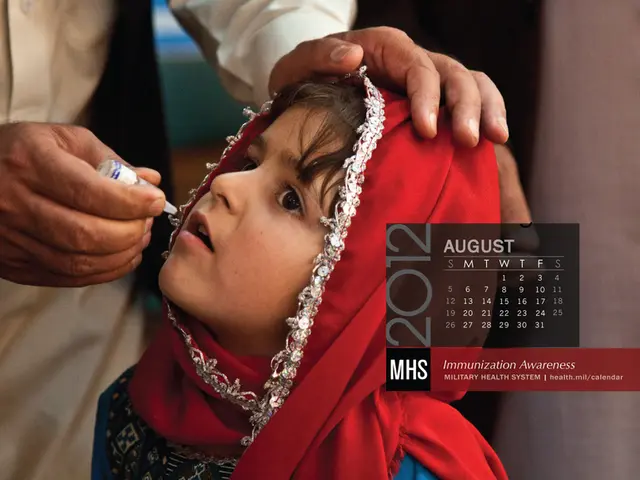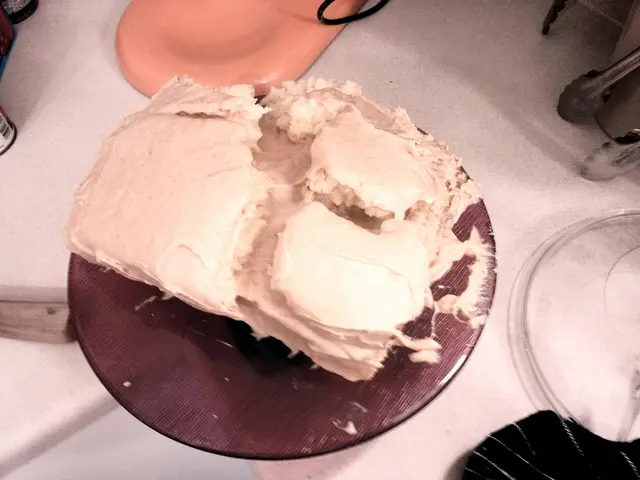Distinguishing Between Age Spots and Skin Cancer: Identifying the Variations to Ensure Proper Diagnosis
Age spots vs. Skin Cancer: What's the Difference?
Aging and sun exposure can lead to a multitude of changes on our skin, with age spots and skin cancer being two of the most common. Though they can appear similar, it's crucial to distinguish these conditions to ensure proper treatment and peace of mind.
Age Spots or Liver Spots: Discover the Differences
Age spots, also called solar lentigines or liver spots, are harmless, darker patches on the skin that develop as a result of increased melanin production to protect the skin from sun damage.
Key Characteristics:
- Size: A few millimeters to centimeters in size.
- Shape: Round or oval and well-defined with clear borders.
- Color: Yellow, brown, or gray.
- Placement: Typically found on sun-exposed areas like the face, hands, shoulders, feet, arms, and back.
Age spots may fade during winter and increase during summer due to increased sun exposure. They are generally harmless and do not require treatment.
Skin Cancer: Warning Signs to Watch Out For
Skin cancer is a type of cancer that can be life-threatening if left untreated. Symptoms and characteristics can vary depending on the type and stage of skin cancer, but there are key warning signs to look out for:
- Texture: Smooth for benign growths, rough or ulcerated with crusting or bleeding for skin cancers.
- Color: Varied, including pink, blue, purple, black, or brown for skin cancers; relatively uniform for age spots.
- Shape: Irregular, blurred, or ragged edges for skin cancers; well-defined for age spots.
- Size: Cancerous lesions may grow in size and shape over time; age spots usually remain constant.
- Symptoms: Persistent sores, bleeding, pain, or itching for skin cancers; age spots are typically asymptomatic.
The three most common types of skin cancer are basal cell carcinoma, squamous cell carcinoma, and melanoma. Actinic keratosis is another precancerous condition that can appear similar to age spots.
Don't Forget Actinic Keratosis: A Precancerous Condition
Actinic keratosis (AK) is a precancerous growth caused by UV radiation that can appear similar to age spots. Actinic keratoses have a rough texture and can be pink, red, or tan, sometimes resembling age spots. If left untreated, actinic keratosis can progress to squamous cell carcinoma.
When to Consult a Professional
If you notice changes in your skin, such as new moles, altered moles, or lesions that are larger than a pencil eraser, be sure to consult a healthcare professional. Seek immediate medical attention if you have symptoms such as persistent sores, bleeding, pain, or itching that do not resolve within four weeks.
Early diagnosis and treatment are crucial for managing skin conditions effectively. Don't hesitate to consult a dermatologist if you have any concerns.
- Seniors often develop age spots, which are harmless, darker patches on the skin, due to increased melanin production from sun damage.
- In contrast, skin cancer is a type of cancer that requires medical attention and can be life-threatening if left untreated.
- Symptoms of skin cancer include texture changes, such as rough or ulcerated lesions with crusting or bleeding, as well as irregular, blurred, or ragged edges.
- Age spots, on the other hand, have clear borders and are usually uniform in color, while skin cancer lesions may grow in size and shape over time.
- The three most common types of skin cancer are basal cell carcinoma, squamous cell carcinoma, and melanoma, all of which have distinct characteristics.
- Actinic keratosis is a precancerous condition that can resemble age spots, but it has a rough texture and can be pink, red, or tan.
- If you notice changes in your skin, such as new moles, altered moles, or lesions larger than a pencil eraser, or symptoms like persistent sores, bleeding, pain, or itching, consult a healthcare professional.
- To maintain good health and wellness, it's important to practice proper skin care, protect your skin from sun damage, and be aware of various skin conditions and their symptoms, including age spots and skin cancer.








